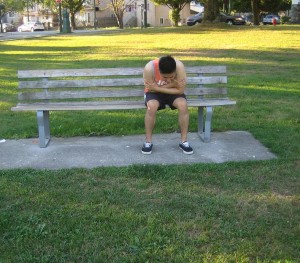When it comes to hypertension, it is documented as a common health issue affecting millions of individuals all over the world that can progress to serious or potentially life-threatening complications but many believe that getting a lower pressure reading is better. On the other hand, this is not true. Take note that suitable blood pressure guarantees that the heart is driving blood with adequate force to dispense to all parts of the body even those that need blood to travel against gravity to reach. There are various symptoms of hypotension or low blood pressure and they can occur abruptly if the blood pressure drops.
Visual changes
Even though chronic low blood pressure can trigger changes in the visual acuity, an abrupt drop in the blood pressure can drastically affect the ability of an individual to see. Once the blood pressure drops and blood no longer reaches distant tissues especially tissues in the brain, the cells in those tissues are deprived of oxygen and could no longer function optimally.
The light-sensing cells in the eyes are highly sensitive to oxygen deprivation and those who have abrupt episodes of a drop in the blood pressure will notice that their visual field becomes dark or blurred. Generally, the effect starts at the periphery of the field and progresses to the center. As for prolonged drops in the pressure, it can lead to full but momentary blackening of the vision.

Dizziness
An initial and evident indication of a drop in the blood pressure is dizziness. Any individual who experiences a drop in the blood pressure will notice lightheadedness or disorientation but the sensation is somewhat similar to orthostatic hypotension.
Once an individual abruptly stands from a seated or reclining position, the heart could not respond properly to the change in position as quickly as the postural change occurs. It simply means that there are a few moments in which the blood pressure is too low for proper distribution of blood to the brain. Understandably, the brain is higher than the heart and the heart has to fight gravity in order to deliver blood to the brain.
Fight or flight response
Once the blood pressure drops, the cells start to send out distress signals. The brain cells notify the entire body rapidly if they are deprived of oxygen. This triggers the so-called “fight or flight” response” which is how the body deals with emergency scenarios including an abrupt drop in the blood pressure. The response includes increased strength and the rate of heart contractions. As the heart beats rapidly and harder, the blood pressure generally increases.
If any of these symptoms are present, it simply indicates that there is a drop in the blood pressure of the individual.
